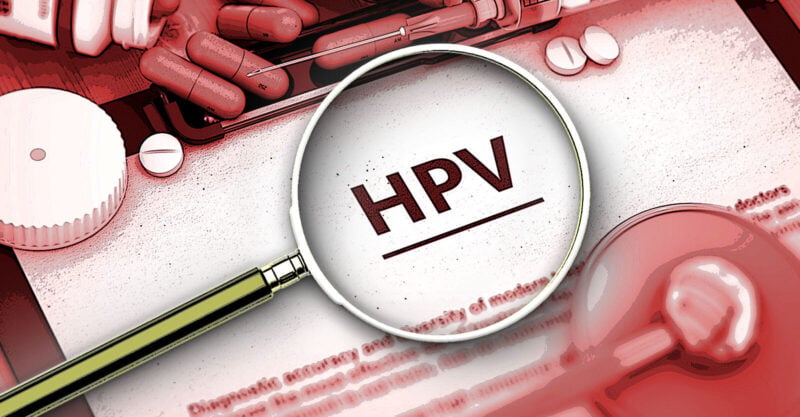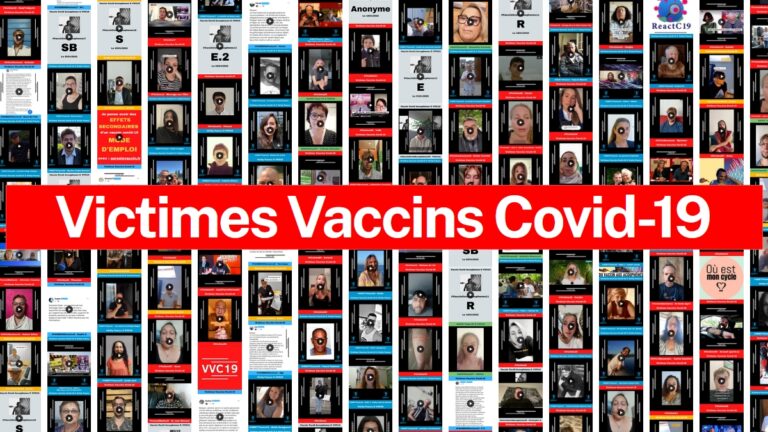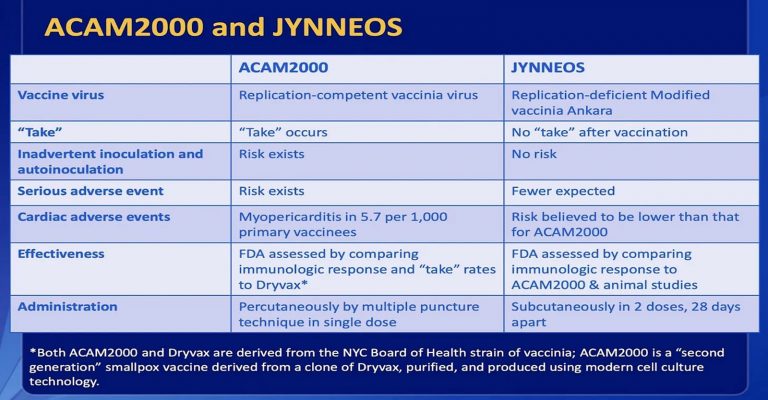HPV Vaccine May Cause Increase in Cancer-Causing Strains, Study Shows — But Media Puts Misleading Spin on Study’s Findings
The human papillomavirus (HPV) vaccine may increase the prevalence and distribution of some HPV virus strains not targeted by the vaccine — including some strains that are linked to cancer, according to a study published last week in Cell Host & Microbe. But STATNews misleadingly, according to experts, concluded the study showed the vaccine was effective at preventing cancer.
The human papillomavirus (HPV) vaccine may increase the prevalence and distribution of some HPV virus strains not targeted by the vaccine — including some strains that are linked to cancer — resulting in unknown and potentially concerning consequences, according to a study published last week in Cell Host & Microbe.
The study was not designed to show that the HPV vaccine prevents cancer or that HPV or cervical cancer screenings need to change, though the authors did include a brief, speculative mention of the potential implications of their findings for future screening.
Yet STATNews, reporting on the study, said the findings showed that the HPV vaccine is so effective at preventing cancers — particularly when both boys and girls are vaccinated — that cancer-screening protocols may need to change.
Kim Mack Rosenberg, Children’s Health Defense (CHD) acting general counsel and co-author of “The HPV Vaccine On Trial: Seeking Justice For A Generation,” told The Defender the STATNews story was misleading:
“The STATNews headline — misguidedly suggesting even less frequent screening — is deeply troubling. Statistics in the U.S. and elsewhere suggest that cervical cancer is on the rise in younger age cohorts where we least expect to see cervical cancer, while continuing to decline in the older populations where cervical cancer historically is diagnosed.
“We know from prior studies that the HPV vaccines already have led to decreased cervical intraepithelial neoplasia/cervical cancer screening at appropriate intervals for young women around the world.
“We have also seen a number of cases in the vaccine injury compensation program in the U.S. (and the multidistrict litigation in federal court) alleging cervical cancer associated with HPV vaccination.”
‘Imminent risk of viral evolutionary responses’ may ‘introduce problems’
The study included approximately 11,000 — not 60,000 as STAT reported — young women born in 1992, 1993 and 1994 from 33 Finnish communities. The researchers divided them into three groups based on their community’s vaccination strategy: gender-neutral HPV vaccination, girls-only vaccination and no vaccination.
Four years after the groups were first offered vaccination (and eight years after for a smaller subset of around 3,600 subjects), the researchers tested for 16 types of genital HPV viruses considered oncogenic (linked to tumor formation) because they are associated with cervical or other cancers. The presence of oncogenic HPV is not the only risk factor for cervical cancer.
There are over 200 strains of the HPV virus, a subset of which are deemed high-risk. Depending on the vaccine, HPV vaccines target only two (Cervavix targets strains 16 and 18), four (Gardasil 4 targets strains 6, 11, 16 and 18) or nine (Gardasil 9, which adds strains 31, 33, 45, 52, 58) of those high-risk strains.
The researchers investigated how different community-level HPV vaccination strategies might change the prevalence of different HPV strains.
They found that in both vaccination groups, four and eight years following vaccination, there was a significant depletion of the high-risk HPV types targeted by the vaccine relative to the non-vaccinated group. The depletion was stronger in the gender-neutral group — when boys had also been vaccinated.
But they also found a higher prevalence of other, lower-risk oncogenic HPV strains than previously existed, particularly in the gender-neutral group. As the vaccine suppressed the targeted strains, the authors explained, other strains moved into the “niche” they formerly occupied.
That means that rather than reducing the incidence of the HPV virus altogether, vaccination changed the distribution of HPV strains, they wrote. Those oncogenic strains not targeted by the vaccine that grew in prevalence are also linked to cancer but at lower rates.
Other studies also have shown that HPV vaccination programs have caused the replacement of the previously most common types of HPVs with rarer types of HPV that also cause cancer.
The authors noted that “the imminent risk of viral evolutionary responses” would diminish the impact of HPV vaccination.
“It is tempting to suggest that an increase of [other oncogenic strains] or the like with increased virulence might cause a risk of HPV-related cancers in the future,” they said.
In other words, new strains that occupy the niche vacated by the vaccine-targeted strains could become more virulent and potentially cancer-causing.
The authors concluded that to control oncogenic HPVs and related cancers, more research on how long-term vaccine use could change the disease evolution is imperative. They said this may have implications for future screening protocols, but did not elaborate.
Rosenberg said the implications are that more rigorous screening protocols may be necessary. She said:
“In ‘HPV Vaccine on Trial,’ my co-authors and I discussed type replacement, a phenomenon found with HPV vaccines and other vaccines.
“The study discussed in the STATNews article actually raises again the specter of type replacement — which should support more rigorous screening protocols, not a lackadaisical, unsupported reduction in screening placing the health of untold numbers of young women at risk.”
Why would ‘type replacement’ matter?
The study authors hypothesized that this strain-type replacement occurs because vaccine-induced immunity reduces the number of people susceptible to the targeted strains and leads to a biased immune response favoring infection by other strains.
Type replacement could also lead to the selection for immune escape variants — new variants that result from the selective pressure on the virus from imperfect vaccination.
Vaccine-favored variants have developed after vaccination for a number of diseases, including hepatitis B, pertussis, Streptococcus pneumoniae, Marek’s disease, malaria and diphtheria.
In some cases, like Marek’s disease and malaria, research shows vaccination led to an increased prevalence of variants with increased virulence. In others, like pertussis, this evolution was linked to the paradoxical reemergence of the disease in highly vaccinated populations.
In other cases, such as Haemophilus influenzae type b, evidence suggested that vaccination caused a milder strain to become more virulent.
One possible biological explanation in these cases could be original antigenic sin, a phenomenon wherein the molecular immune memory to a previous antigen hampers the ability of the immune system to properly recognize a structurally similar target, J. Jay Couey, CHD staff scientist, told The Defender.
Another related but separate mechanism — antibody-dependent enhancement — occurs when antibodies aimed at previous antigens (from infection or vaccination) have the paradoxical effect of increasing the severity of disease in subsequent infections, Couey said.
“Neither of these biological possibilities are discussed in either the STAT or Cell Microbe articles in general or in relation to the questions regarding the ‘ecology’ of HPV,” Couey added.
In the study, the authors emphasized that particularly among the gender-neutral vaccine groups, the targeted strains were suppressed. However, between four and eight years post-vaccination, the levels of HPV diversity were similar to those of the non-vaccinated control group.
The researchers found that after vaccination, non-targeted cancer-linked HPV types increased in prevalence and diversity. This suggests that even with vaccination, different cancer-linked HPV types are still evolving in complex ways.
This raises questions about the long-term effects of the HPV vaccination on the antigenic variation and possible virulence shifts of the remaining oncogenic HPVs, the authors noted.
Cervical cancer ‘eradication’ by vaccinating boys?
In the authors’ press release on the study — also reported in Medical Xpress — they claimed definitively, “The most effective way to prevent cervical cancer is to give HPV vaccines to both boys and girls.”
This claim was based on their finding that in the communities where boys and girls were vaccinated, they saw a decline in four types of oncogenic HPV (16, 18, 31 and 45) and in the communities where only girls were vaccinated, they saw a decline in only three types of oncogenic HPV (16, 18 and 31).
“This shows that you get stronger herd immunity if you vaccinate both boys and girls,” said lead author Ville N. Pimenoff, Ph.D. “According to our calculations, it would take 20 years of vaccinating girls to achieve the same effect that can be achieved in eight years with a relatively moderate vaccination coverage rate of gender-neutral vaccination.”
However, they concede this herd immunity would not eliminate the risk of HPV-linked cancer, given the type replacement they identified.
Couey said these claims about the efficacy of gender-neutral vaccination are based on a questionable methodology, using a “dubiously blurred” combination of data sets.
Couey told The Defender:
“Their ‘observations’ are made without any data from HPV prevalence in these populations before vaccination and using a general linear model, or GLM, to interpret their data set. There are no quantitative differences for the authors to draw from in their data without mathematically extending it to a synthetically generated data set using a mathematical fitting technique the authors termed a graphical independence network, or GIN, model.
“The distinction between conclusions drawn from real-world observations in experiments versus conclusions drawn from mathematical modeling inference is dubiously blurred in this article and the follow-up coverage of it.
“Their conclusions are not based on disproving a null hypothesis using an experiment. Their conclusions are at best inferences drawn from the interpretation of mathematical models applied to limited real-world data.”
This analysis builds on previous analyses of these same cohorts the authors did with colleagues from Merck, GSK and the Bill & Melinda Gates Foundation.
That research also claimed that HPV vaccination with moderate coverage “eradicates” oncogenic HPV if a gender-neutral strategy is used. It also asserted in 2018 that there was no evidence of type replacement — findings this current study upends.
Those Big Pharma corporations have been dedicated over the last several years to expanding HPV vaccination throughout the world to girls, but also more recently to boys and to young and middle-aged adults.
In 2020, the WHO’s World Health Assembly ratified a plan to eradicate cervical cancer as a public health problem worldwide, largely by expanding global HPV vaccination.
Various agencies of the Department of Health and Human Services have spent at least tens of millions of dollars on behavioral research to increase vaccine uptake in the U.S.
Gavi, the Vaccine Alliance —- primarily funded by the Gates Foundation —- recently announced WHO-supported plans to vaccinate 86 million girls in low- and middle-income countries against HPV by 2025 as part of the global plan to eradicate cervical cancer.
At the same time, HPV Gardasil vaccine-producer Merck, which has invested heavily in shaping the market since the U.S. Food and Drug Administration approved the drug in 2006, last month announced that its 2023 third-quarter Gardasil sales grew 13% to $2.6 billion.
Merck’s Gardasil was first licensed in 2006 for use in girls and women ages 9-26 to prevent four high-risk strains of HPV.
The FDA in 2009 expanded the license for use in males ages 9-26 for the prevention of genital warts and in 2011, the Centers for Disease Control and Prevention’s Advisory Committee on Immunization Practices recommended it for routine use in boys.
In 2014, the FDA approved Gardasil 9, designed to protect against nine HPV strains, for use in the prevention of HPV-related cervical, vaginal and vulvar cancers in females and HPV-related anogenital lesions and anal cancers in males and females.
The FDA in 2018 also expanded the age range of potential HPV vaccines to males and females between the ages of 9 and 45.
This article was originally published by The Defender
Watch our Exposé here: HPV Vaccine Exposé- Know The Facts, Get Informed | Sep 22, 2023
Suggest a correction






